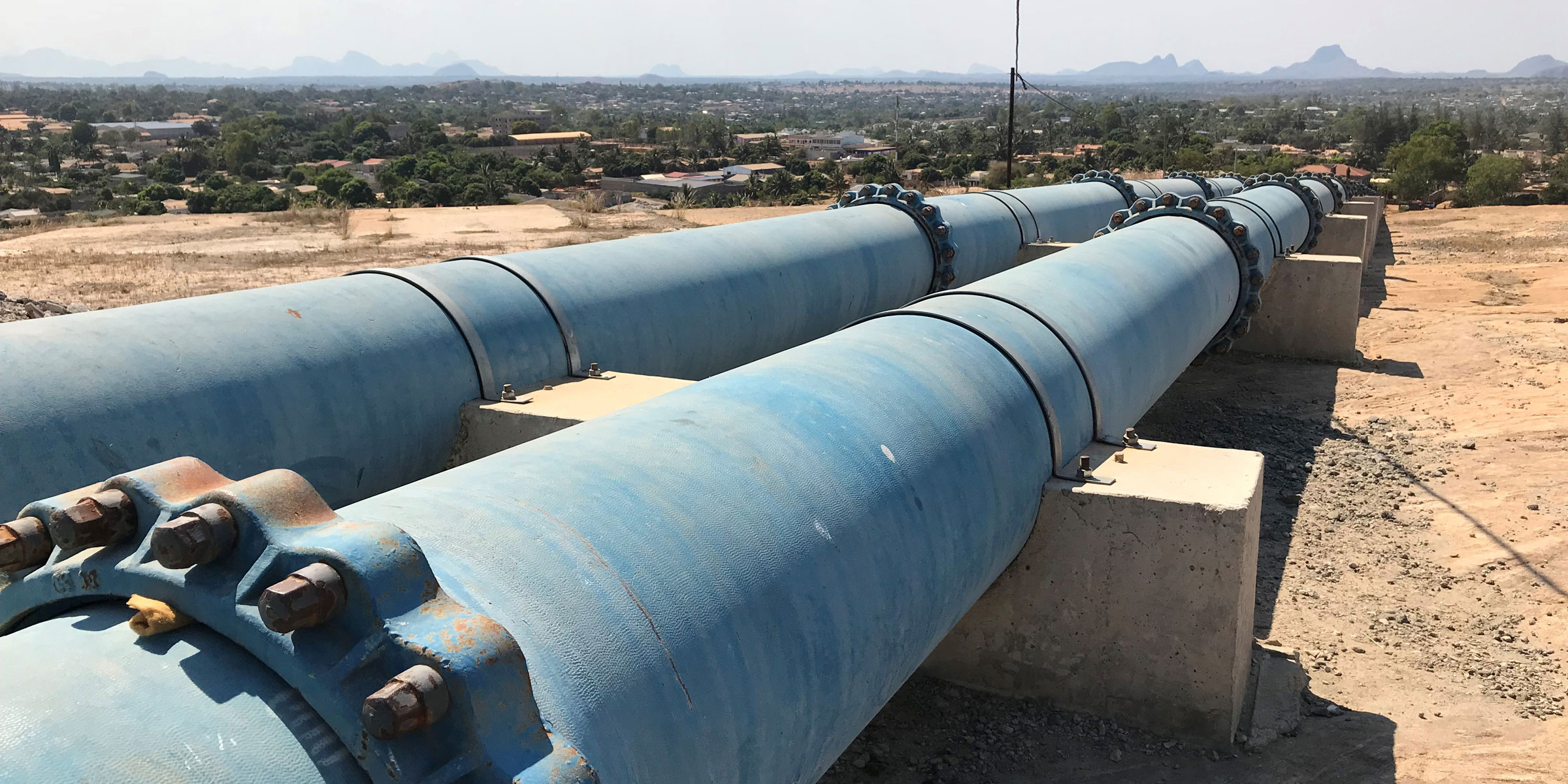Program Overview
MCC’s $447.9 million Mozambique Compact (2008-2013) funded the $187.3 million Urban Water Supply and Drainage and Sanitation Activities of the Water Supply and Sanitation (WSS) Project to improve access to safe water and reduce flooding. The activities rehabilitated and expanded water supply and drainage infrastructure and provided technical assistance, which aimed to reduce the incidence of water-borne diseases and ultimately increase the productivity of individuals and firms.Evaluator Description
MCC commissioned an independent, final performance evaluation of the Urban Water Supply and Drainage and Sanitation Activities of the WSS Project by Mathematica Policy Research. The study assesses implementation, maintenance, and outcomes. Full report results and learning: https://data.mcc.gov/evaluations/index.php/catalog/234.
Key Findings
Capacity, Maintenance, and Sustainability
- Overall, the Nampula and Nacala city water supply infrastructure was well-maintained and their sustainability was linked to the capacity of the water operator.
- Maintenance of drainage has been a challenge, as sanitation companies were not ready for autonomous management.
Water Supply
- Nampula city water supply investments contributed to increased water volume and service hours. However, full intended benefits were limited by the water volume available from the dam itself.
- The Nacala Dam investment increased the system’s potential capacity, but water supply to customers continued to be constrained by the incomplete treatment and distribution works.
Drainage
- Residents credit perceived flood reduction to the drainage systems and noted that drains helped water flow off the streets.
- Even so, this activity did not seem to affect the prevalence of malaria in Nampula and Quelimane. Households and health workers reported malaria continued to afflict families living nearby.
Cost-effectiveness and Lessons
- Overall, it is doubtful that these investments were cost effective, as key outcomes were non-existent or marginal.
- To realize benefits from improved piped water systems, the supply, treatment, and distribution need to be in place.
- Infrastructure needed to be paired with sufficient capacity building to ensure sustainability.
Evaluation Questions
This final performance evaluation was designed to answer the following questions:- 1 Was the program implemented according to the approved plans and budget?
- 2 Are the infrastructure investments operational and being appropriately maintained?
- 3 What were the effects of the urban water supply activity on key outcomes (water supply, reliability, consumption, and expenditure; malaria and diarrhea incidence)?
- 4 What was the effect of the urban drainage and sanitation activity on key outcomes (drainage capacity, flood incidence and severity, and malaria incidence)?
- 5 What was the effect of the capacity-building activity on sanitation service delivery?
- 6 As implemented, were the activities cost-effective?
- 7 What lessons can MCC or the GoM apply in future programs to program design, implementation, and sustainment of results?
Detailed Findings
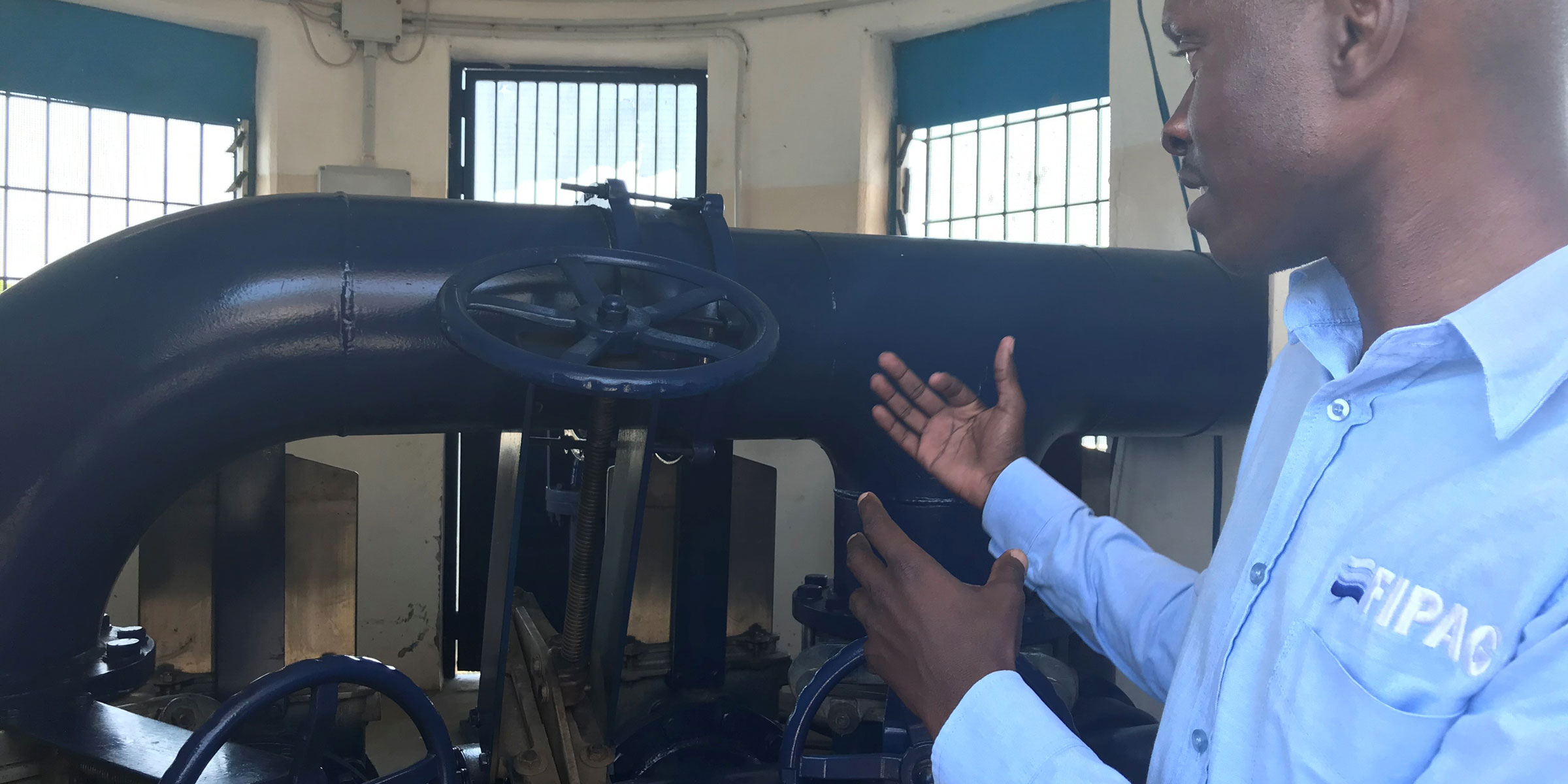
FIPAG staff showing pump at dam.
Capacity, Maintenance, and Sustainability
Water Supply – The Urban Water Supply and Drainage and Sanitation Activities were largely implemented to the final, rescoped plan, except Nacala city water supply systems, which remain incomplete. The cities of Nampula and Nacala’s water systems remained well-maintained in part due to the high levels of capacity demonstrated by the Mozambican water operator and on-site training provided by the compact. Meanwhile, the city of Mocuba’s works construction quality and constrained resources compromised their lifespan.Drainage – The drainage and sanitation component was implemented to plan. Nampula and Quelimane drainage remained in working order. However, insufficient technical assistance resulted in municipal sanitation companies unable to autonomously operate and maintain the infrastructure. Communities in Nampula continued to deposit trash in the drains, clogging the canals. Despite these challenges, Quelimane maintained a strong culture of solid waste management that kept the drains clean.
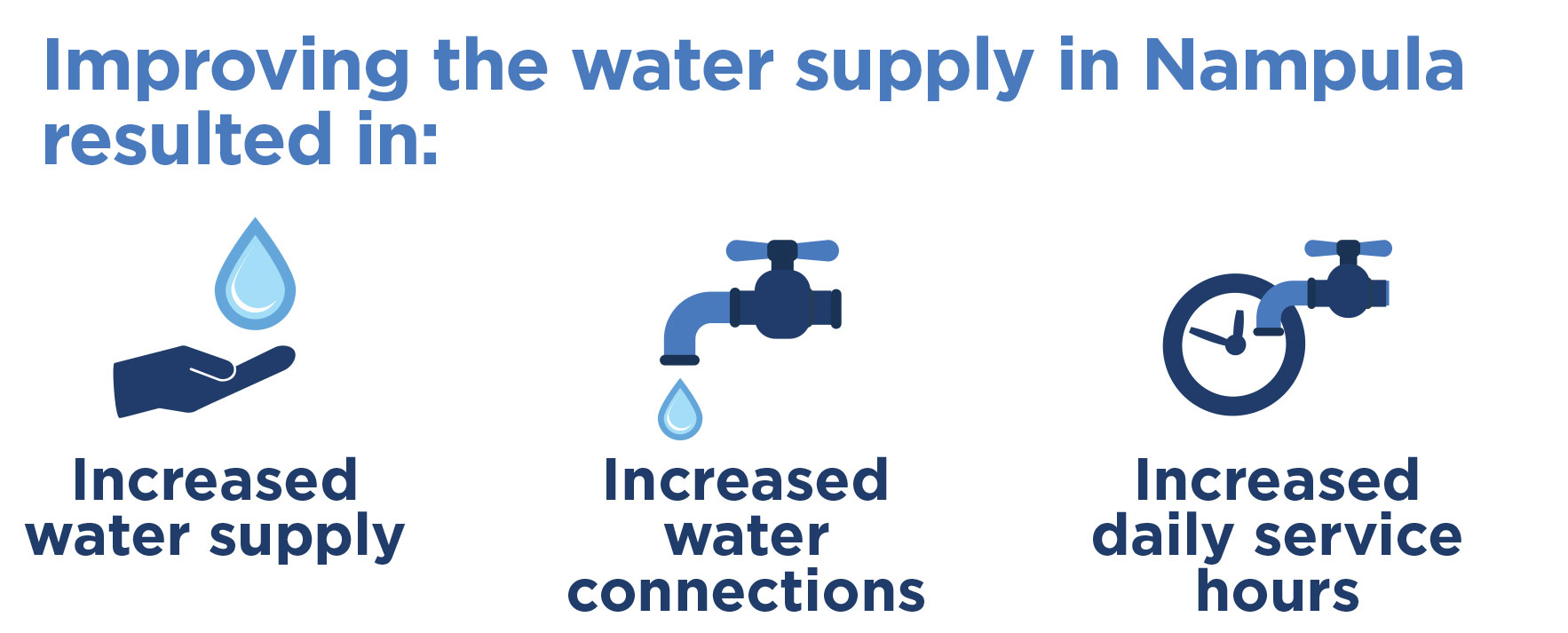
Water Supply
Investments in the Nampula city water supply contributed to growth in water supply, number of water connections, water expenditure, and daily service hours. Even so, the investments failed to reach even half of the intended population and more recently, a rising share in non-revenue water threatened gains made by the compact.Investments in Nampula aimed to improve health outcomes and increase growth in business. While there were improved health outcomes and more commercial connections post-compact, neither outcomes could be attributed to the compact.
The Nacala Dam increased the potential water supply capacity in Nacala city. However, the accompanying water treatment plant and transmission pipes were not completed due to contractor non-performance—and so, the outcomes from this intervention had not materialized.
The Mocuba works doubled the volume of water available to customers and increased service hours. However a massive flood in 2015 destroyed the bank intake system and shifted the course of the river, negating future benefits.
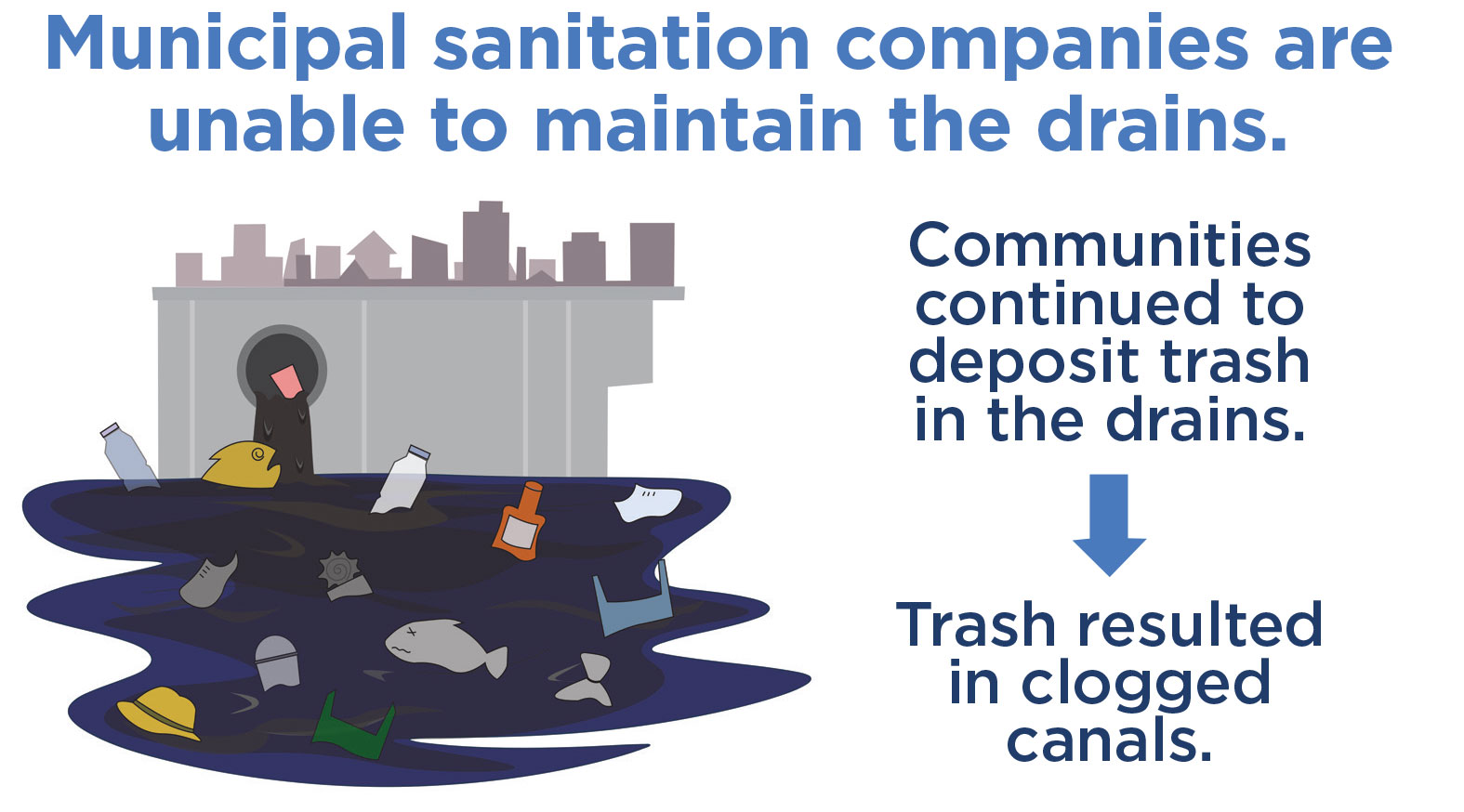
Drainage
Residents claimed the drainage systems in Quelimane and Nampula reduced flooding—noting shorter duration of flooding and greater mobility during the rainy season. Within Nampula city limits, stakeholders noted that the drainage system helps water flow off the streets.The infrastructure intended to reduce malaria and other waterborne diseases. While it remains impossible to attribute outcomes to the drainage, data suggests that malaria has not fallen and continues to afflict families living nearby.
Cost-effectiveness and Lessons
Overall, it is doubtful that the Urban Water Supply and Drainage and Sanitation Activities were cost effective, as targeted outcomes in Nacala did not materialize due to incomplete works and were nullified in Mocuba because the works were destroyed by flooding. Similarly, while residents perceived a reduction in flooding after drains were installed in Nampula and Quelimane, the drains’ effects on malaria prevalence were marginal.
Damaged intake tower wet-well in Mocuba post 2015 flood.
To realize benefits from improved water supply systems, the supply, treatment, and distribution need to be in place. All components are required for success. In Nampula, the urban water interventions improved treatment and distribution, but did not consider supply expansion. In Nacala, the design brought together all components but contractor non-performance on treatment and distribution construction prevented urban water supply investments from reaching its beneficiaries.
In addition, infrastructure should be paired with sufficient capacity building to maintain the infrastructure and maximize benefits. The companies created to manage the drains lack the capacity to maintain investments in the post-compact period.
Finally, outcomes should be linked to data to show results. For example, a critical outcome of the drainage was reduction in flooding, however neither the Government of Mozambique nor the project collected this type of data.
MCC Learning
- Future WASH infrastructure investments should be complemented with robust public outreach and behavior change components to be more effective.
- Sustainability of investments could be improved if MCC started capacity building earlier in the compact life cycle.
- Drainage investments should be informed by flood modeling that is well documented such that the model can be updated after the drains' completion in order to assess their efficacy.
- Access to utility data should be established as an agreement of the compact itself and should carry over to the post-compact M&E plan.
Evaluation Methods

The new Nacala dam, completed in 2013.
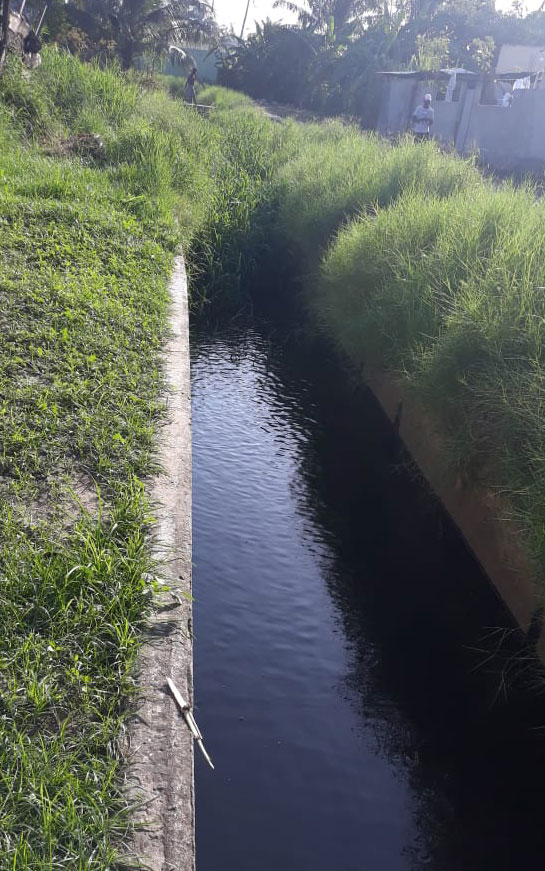
Intact Quelimane drainage channel with some overgrowth.
- Interviews with over 30 stakeholders involved in the design and implementation of the project and more than 40 households in Nampula and Quelimane.
- Documents and administrative records from project stakeholders and implementers.
- Administrative data from the utility (2008-2018) and the Ministry of Health (2002-2018).
- Direct Observations including site visits to all the infrastructure works implemented by MCA-Mozambique and the offices of the municipal sanitation companies.
2019-002-2313


